Placement of Palm Trees – Palm Garden Design
by Phil Bergman
This article discusses basic concepts that should be considered in creating a desirable palm garden. Placement of palms is very important. A strategy would include planning ahead, giving plants ample room to grow, establishing an overhead canopy, spacing of plants so that plants aren’t too crowded, knowing sun or shade requirements, preserving desirable views and utilizing different appearing species to make the garden interesting.
INTRODUCTION
While writing this article I remember all the mistakes I made in planting palms in my garden. As a palm enthusiast, like many others, I tended to over-plant. If you are blessed with a huge yard, over-planting might not be a concern.
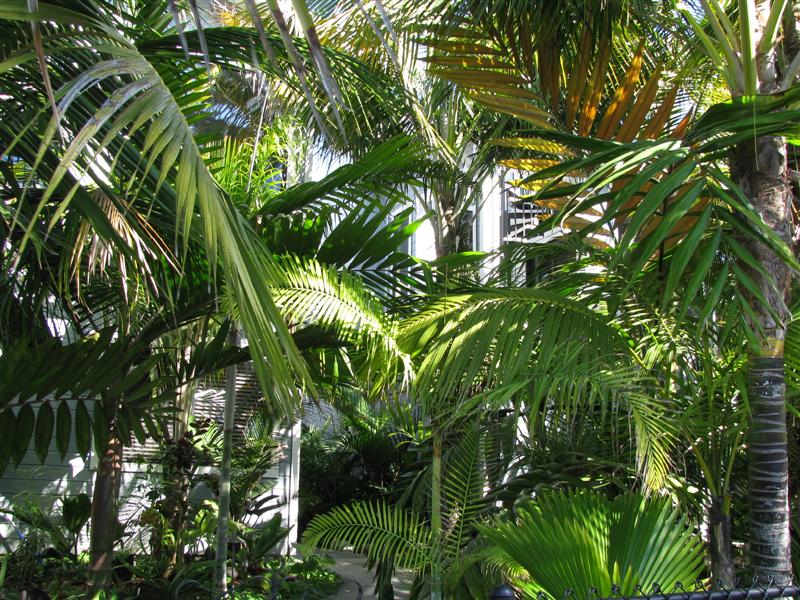
But, if you have a smaller garden, you have to select palm species carefully so you don’t overwhelm the space you have. The photo to the left shows a “crowded” garden. If you are just starting, an important part of your garden and palm tree care is to have a scheme or plan of what you are doing. Remember, haphazard planting gives haphazard results. Unlike other types of trees, palms are very predictable. You can predict trunk diameter, crown diameter, and eventual overall height. You also should know whether or not it will have spines, whether it will sucker, and the cultural requirements. What one must do is give the palm enough space for what it is going to be, not what it is now or in the near future. In this way, you are planning ahead for the plant’s future. Below I will discuss the various aspects you should consider when planning a design for putting palms in your garden.
GIVING PALMS AMPLE ROOM TO GROW
When growing palm trees, think about how much space a species will ultimately need. For instance, if you put in a large species such as the Canary Island Palm, Phoenix canariensis, give it a lot of room. Such a plant could easily dominate a 20-foot circumference area. Likewise, Phoenix reclinata (shown to right) will, in time, form multiple stems and need a large area.

Even a triple Archontophoenix cunninghamiana needs a fair amount of room. (shown to left) It is true that, when some species have trunked out and are well overhead, the problem is less apparent. This would be the case with a King Palm. But, suckering species like the Phoenix reclinata (right)just have to be given adequate space to grow. If you can’t step back and take a photograph of a palm in your garden, you have probably planted things too closely. Suckering palms also tend to take up more garden floor space (plant “footprint”) over time. This can affect space available for smaller plants or companion plants that you may want to add in the future. The important point here is: Consider the size the palm will eventually be, not the size it is when it’s in the nursery pot in front of you.

ESTABLISHING A CANOPY WITH YOUR PALM TREES
An important concept to understand when you create a tropical garden is the establishment of an overhead canopy. This is a very important factor in creating a lush palm garden. An overhead canopy provides filtered light below, keeps harsh sunlight off the more tender garden floor plants, increases humidity at ground lever and acts as an “overhead blanket” protecting plants below from cold. Examples of fast growing palm species would include Archonotophoenix, Caryota, Syagrus, Washingtonia and some Ravenea.
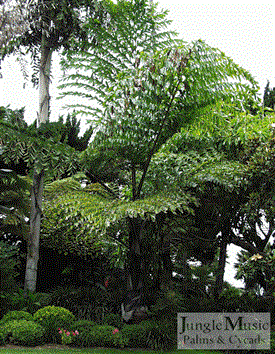
These genera usually put on height rapidly and are ideal for establishing a canopy. There are certainly many more genera of palms that attain enough height to give canopy. Such species also help create microclimates within your garden. Many enthusiast think that creating an overhead canopy is one of the most important factors in eventual garden success. Shown to the left is Caryota gigas which has fifteen foot long leaves that are almost as wide as they are long. To the right are multiple tall trees giving filtered light below. When the leaves are overhead, one definitely notices the shade created below. A final point: When you select canopy forming species, they are, by definition, large palms or other trees. So, you must (as mentioned above) give the trees ample room to grow and develop.
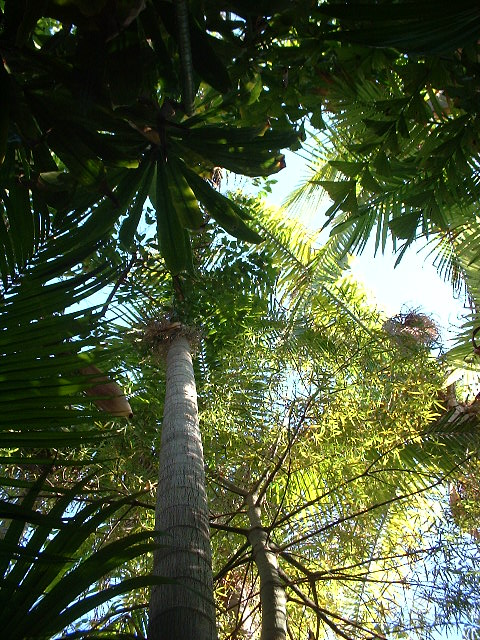
KNOW THE SUN OR SHADE REQUIREMENTS OF WHAT YOU ARE PLANTING
Some palms don’t like full sun. Others demand full sun and may even die if planted in shade. This means the garden designer must know the individual sun requirements of all species selected. At this website there are lots of references to individual species and their sun requirements. Or, one could use the Internet or reference books to obtain this information. Another important point is not all sun is the same. Sun along the coast is not nearly as intense as sun in a desert area. If you live in the desert, specifically look for species that are known to do well. We help customers with such selections all the time. But, if you are researching things on your own, do consider far inland sun intensity. With these things said, some sun-loving species would include Bismarkia nobilis, Dypsis decaryi, Chamaerops humilus, Roystonea regia, Acoelorrhaphe wrightii, Roystonea regia, Wodyetia bifuracata and many other species. Shade loving plants would include most Chamaedorea, most Rhapis, Pinangas, many understory Dypsis, most Licuala, Laccospadix, Cryosophila, and others. Of note, there are some palms that would like part day sun (less than full sun). Such palms would include Pritchardia, most Arenga, Rhopalostylis, Euterpe, and many Ptychosperma. Ideally, one would get started on establishing a canopy before planting shade demanding plant – or they could burn. Shown here is a shade loving Chamaedorea and a Pritchardia, which likes part day sun, to the right.

A website feature we’ve added to this Site will give you quick ideas about sun or shade loving species. Click to See.

DON’T PLANT PALMS TOO CLOSELY TO A WALKWAY OR STRUCTURE
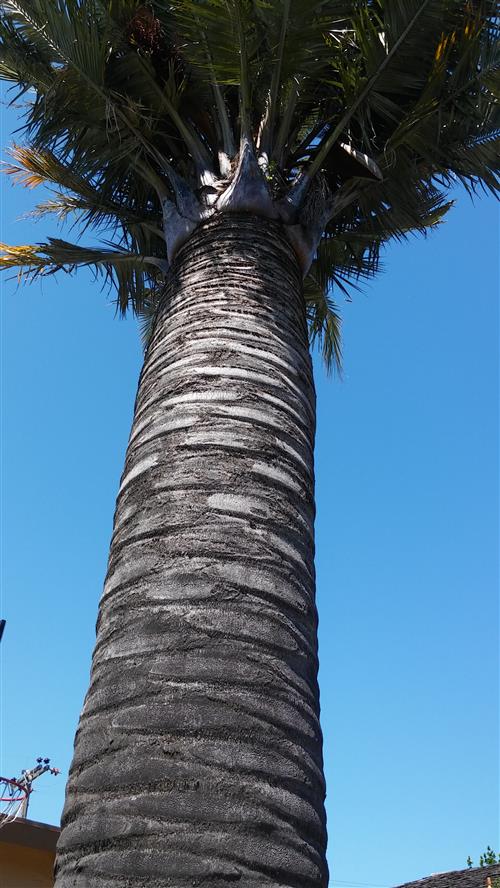
In general, palms do not lift sidewalks nor damage foundations. However, there is a limit to this statement. A very large species planted inches away from a house’s foundation can cause problems. By knowing what you are planting, you’ll avoid planting a palm close to a structure or walkway that eventually will get huge. An example would be a spiny, suckering palm like Phoenix reclinata two feet from an important walkway. In time, it’ll encroach upon the walkway and, because of the spines on the leaf-stems, be a threat to pedestrians talking a stroll. The palm shown to the right is a Rhapis humilus. This species is fairly benign but suckers and the footprint of the plant expands. So, it’d ideally be planted at least four feet back form a walkway. Also consider if the plants crown will clear the house’s eaves. If you are planting along a public sidewalk or in a street-side planting area, be particularly cautious about palms that are a threat to others or put out new stems that will be a problem. Also, never put a spiny palm, especially Phoenix species, next to an area where people walk or play. Palm spines can cause serious body injury. Finally, consider the mature trunk diameter. Jubaea chilensis shown to the left can develop a trunk with a four foot diameter. It needs lots of room.
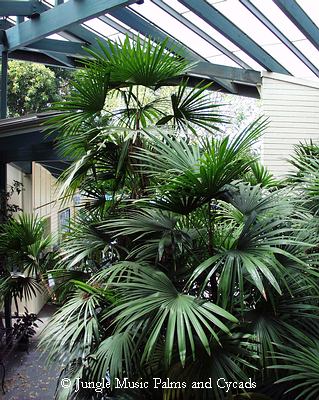
CONSIDER CLUMPING SPECIES OR “MULTIPLES”

In case you didn’t know, when you see a palm with multiple stems, one of two things is present. It could be a true “suckering” species that puts out new offset stems and then forms a clump of multiple stems. Or, it could be a single trunk palm where several were put into the same pot and were grown to form a “multiple”. One sees this latter situation most commonly with the Pygmy Date Palm, Kentia Palm or the King Palm. A double, triple or even quadruple planting of King Palm is really quite dramatic (first photo of a double Purple King Palm to the left). Each trunk nicely curves away from its partners over time. Such a grouping is also aesthetic with Roystonea, Wodyetia and single trunk Chamaedoreas. Clumping of individual plants typically does not look good on very large species, e.g., Phoenix canariensis, Arenga pinnata, or Caryota urens. Also, many fan palms are not well suited for planting as “multiples”. An interesting medium sized palm that suckers on its own is Arenga engleri, the Dwarf Sugar Palm, shown the right. The second photo to the left is a triple Pygmy Date Palm. All of these types of palms are an interesting addition to any garden.

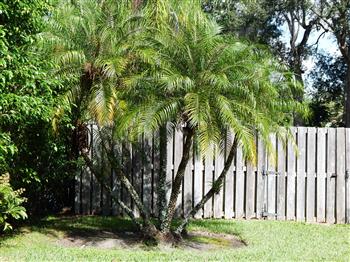
The last photo to the right is the Areca Palm, Dypsis lutescens. This species tolerates full coastal sun and only gets
to a mature height in So Cal of twenty feet. It puts out multiple stems. Most plants carry about 8 to 10 stalks. We tell customers it’s a great palm to block a structure or “hide a neighbor”. The palm to the left is a “multiple” of single trunk Phoenix roebelenii, the Pygmy Date Palm.
Whether you choose a true suckering species or a “multiple”, these plants are fun in the garden and people like them.

CONSIDER USING UNUSUAL SPECIES AND NOT JUST FEATHER PALMS
Diversity of species really add character to a garden and gives it some botanical significance. By the latter, I mean that people who visit get excited because they’ve not seen these plants before. With this said, I’ve heard many times from new palm enthusiasts, “I don’t like fan palms. – I only like the feather palms!”. This comes from lack of experience and associating “fan palms” with the very common Mexican Fan Palm. But, there is a whole assortment of gorgeous and different fan palms that add to the appeal of any garden. I’ve said many times, “If you garden only has palms that look like Queen Palms, it’s going to be boring”. Consider varying the species that you plant.
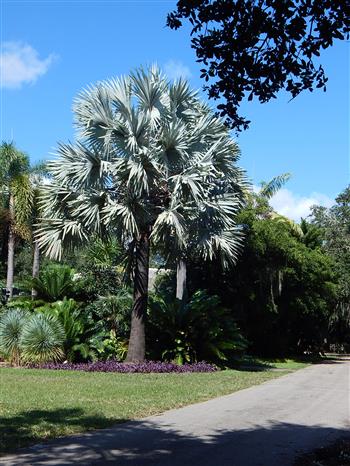

Fan palms look great alongside feather palms. They add a different character and texture to the garden. A very popular fan right now is the blue Bismarckia nobilis, photo to the left. It really does get as blue as you see here. It demands full sun. In some areas if you don’t get very cold, consider Licuala species. (photo to right). Or perhaps the dwarf, blue Brahea decumbens (second photo to left) may appeal to you. But, consider the idea of utilizing some fan palms. Also remember that fan palms are typically slower growing than pinnate palms. Plant your fans early in the course of your gardens development so the fan palms can keep up with your pinnate palms. Be imaginative: use boulders, mounds, or small walls in your garden to give elevation differences. Strap some orchids onto your trunked palms. Add some ferns and flowers. All these things add to the charm of your garden.
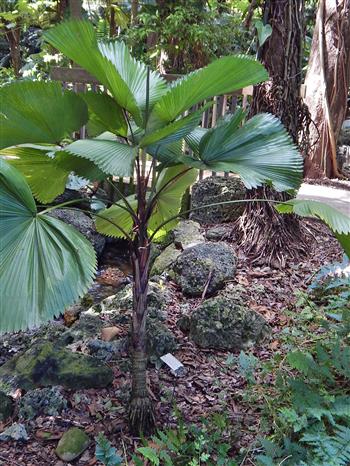
PRESERVE AND ACCENT ALL VIEWS AND VANTAGE POINTS
Be selective in planting your palms so you can maintain views around your home. This includes sought after panoramic views. In the view “alley, use less obstructive palms, i.e., smaller, shorter or thinner palms. Another view to maintain are the multiple areas where you enjoy stopping or sitting to view your garden. It’s your chance to enjoy your creation. One shouldn’t block views into the garden from these vantage points. You don’t want to stop, look at the garden and see only one suckering, thick and view-obstructing palm. So, consider this before you plant. Things to consider are: Allowing enough space space between plants and avoid clumping palms near your vantage point or pathways. Rather, utilize the clumping palms toward the back of the garden to hide unsightly fences, walls or an unwelcome neighbor.


Also, some people prefer stair-step plantings – smaller plants closer to you up front, larger plants or suckering ones in the rear. The photo to the right above shows a miniature palm, Chamaedorea ernesti-augusti, that rarely gets to five feet palm. It’s a cute way to adorn a shady spot next to a walkway. Below is Chamaedorea metallica, a different small dwarf, single trunk shade plant that’s good for the foreground. Choices are up to your own aesthetics. You can accent an entrance or courtyard with colorful or lush species of palms or nice companion plants. But, remember views are important as they affect the way you and others look at your yard. Think about the ideal planting scheme for your yard.
CONSIDER SPECIFIC NEEDS – BOTH YOURS AND THE PLANTS’
Proper palm tree care demands that you know that different palms require a wide variety of conditions. So, it is important to know what your conditions are and what any given species prefers. Soil type, high and low temperatures, wind, etc., are some of the important factors to consider when you plant your garden. Sun requirements should be known before planting palm trees into the ground. But, water needs also is a concern. Acoelorrhaphe wrightii (left), the Paurotis Palm, loves a lot of water – it’s almost a swamp palm. Contrast this to Brahea armata (right), the Mexican Blue Fan Palm, that wants more arid conditions. So, you wouldn’t want to put these two palms side by side, being watered the same. Rather, make a more moist area and a drier one and control irrigation differently to each area.
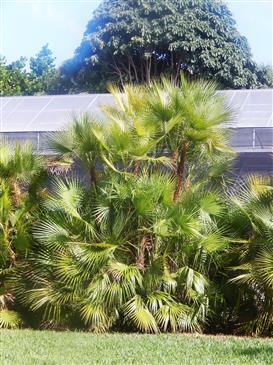
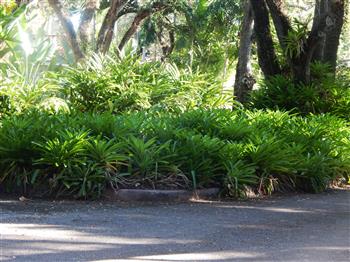
Also remember your own particular needs. This might be to create privacy for a spa, maintain a view for city fireworks, block visibility into a window, hide an ugly apartment building in the distance or hide the garbage cans. I’ve heard them all. There is most likely the perfect palm for all these needs.
Some enthusiasts have particular situations like oceanfront gardens, hot inland gardens, arid gardens, and windy gardens. All of these have their own specific conditions and preferable palm species. Within your garden itself, there also may exist different microclimates. You may have wet areas. You may have dry soil areas. But this is not a problem and you can take advantage of this and plant species specific to each microclimate. Research will lead you to the right palms. Or, drop by our nursery and we’ll help guide you to the perfect plant solution.

DON’T OVERPLANT ANY GIVEN SPECIES
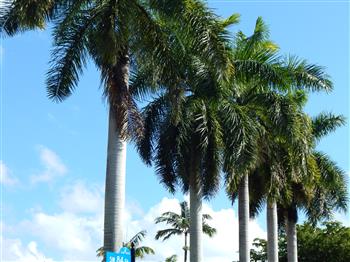
Be experimental in what you plant. Mix species, textures, types, and looks when growing palm trees. Importantly, try to avoid planting too many of one species just because you got a good deal. The latter will lead to a boring garden. I once knew a man who planted one hundred Queen Palms in his front yard. He said he got a good price and thought he’d make some money by digging them up later. He planted them all in rows. Needless to say, it was the worst landscape job I have ever seen. Eventually he lost money because he had to pay tree-removers to correct his mistake. Remember the saying that more may not be better. Its also more fun to expand your collection. One exception to repetitive plantings might be along a parkway or along a driveway. In these locations repeating Royal Palms or King Palms look very nice. See photograph to the left where many Roystonea regia are planted in a row and are very attractive.
THINK ABOUT THE POTENTIAL LOSS OF SUN IN THE FUTURE
You may have wide open sun today, but with planting of the fast growing species, your sun is going to diminish and your palm tree care will suffer.. Plan on this. In other words, think about where you shade is going to be when your palms are large. For instance, if you are trying to keep sun shining on a swimming pool, don’t plant canopy-forming species on the southern side of the pool. Also don’t plant a sun-loving species in an area that you know will eventually be shaded out. I have lost Dypsis decaryii,Phoenix roebellini, and Aceoelorrhaphe wrightii in my garden because they got shaded out.
REMEMBER TO ACCLIMATE YOUR PALMS
Make sure your palms are acclimated to your area and your sun before planting palm trees. If a plant is coming from a greenhouse or filtered light, gradual acclimate it to full sun over a few months. Alternatively, one can use temporary overhead shade structures for protection while growing your palm trees before planting. Remember to water thoroughly after planting a new palm. If you are craning in large specimens, you can get some instant shade for under-story palms. Take advantage of it. Read How to Acclimate Palms
SUMMARY AND WHAT TO ANTICIPATE
Every garden and every palm enthusiast’s ideas and needs are different. However, above are some agreed upon concepts that will help guide them through their goal of creating a beautiful garden. All are simple, usable rules. If you follow them, you will perhaps avoid some of the mistakes that others have made. The photos below show you ideas of what you can create. Use your imagination but follow rules on what to plant and where to plant it and you’ll accomplish your goals and needs. Good luck with it.

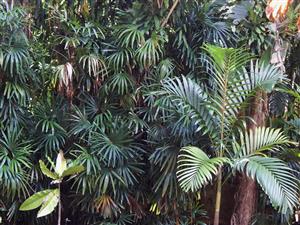
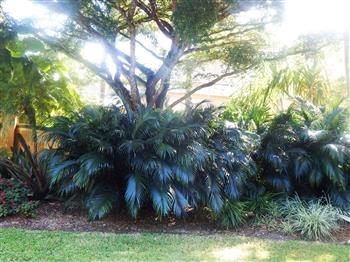
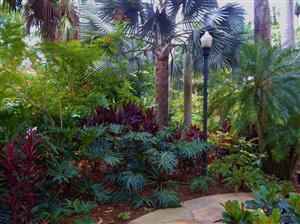
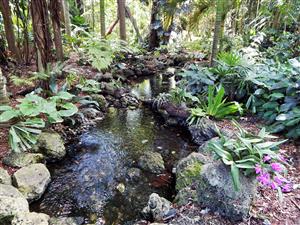
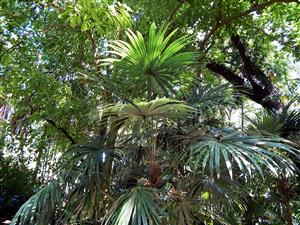
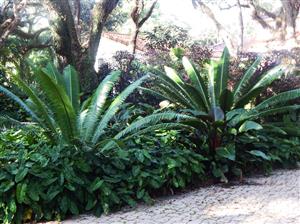


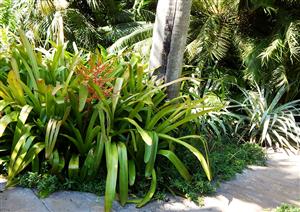
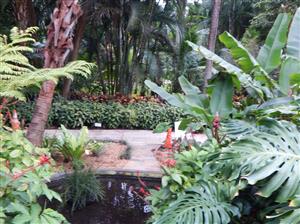
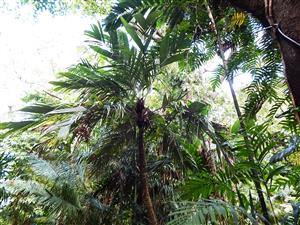
Thank you for reading this article.
Phil Bergman
Owner of Jungle Music, Palm and Cycad Author and Creator of this Website
- PALM TREES, CYCADS & TROPICAL PLANT BLOG - October 1, 2020
- TRACHYCARPUS
The Windmill Palm - September 30, 2020 - FAN PALMS –
PALMS WITH CIRCULAR LEAVES - September 29, 2020











